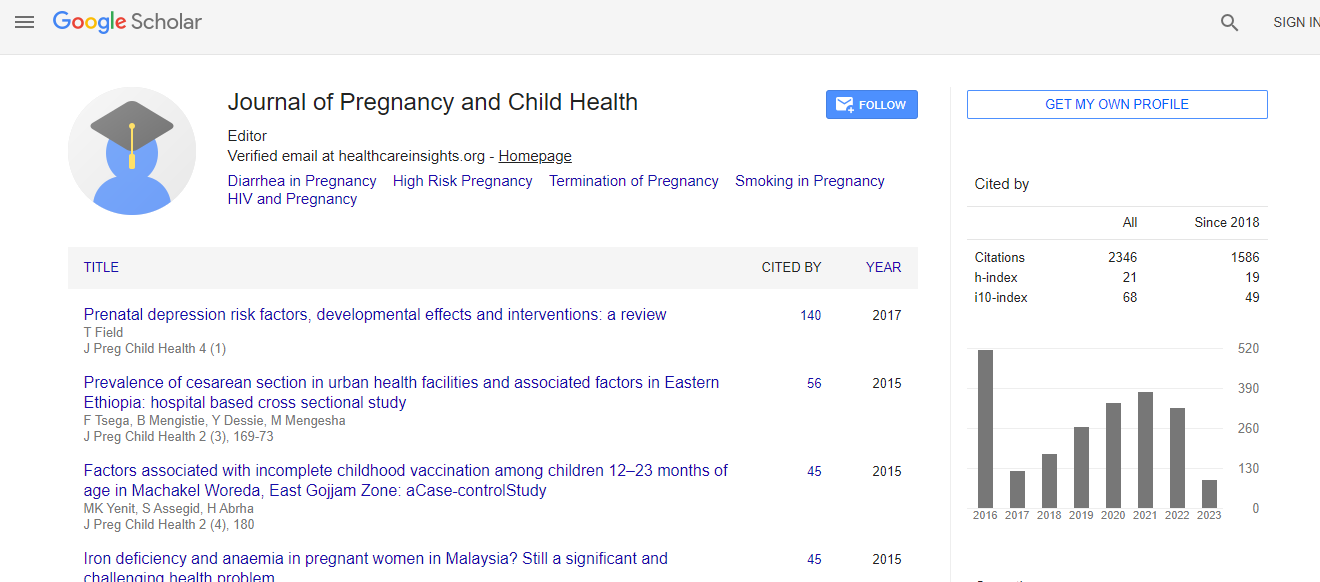Research Article
Prepregnancy Body Mass Index and Offspring Birth Weight in Women with Type 1 and Type 2 Diabetes
Sidse Kjærhus Nørgaard1,2*, Nicoline C Do1,2, Björg Asbjörnsdóttir1,2, Anna L. Secher1,2,3, Lene Ringholm1,4,5, Peter Damm1,2,4 and Elisabeth R Mathiesen5
1Center for Pregnant Women with Diabetes, Rigshospitalet, Copenhagen, Denmark
2Department of Endocrinology, Rigshospitalet, Copenhagen, Denmark
3Steno Diabetes Center, Gentofte, Denmark
4Clinical Institute of Medicine, Faculty of Health and Medical Sciences, University of Copenhagen, Copenhagen, Denmark
5Department of Obstetrics, Rigshospitalet, Copenhagen, Denmark
- Corresponding Author:
- Sidse Kjærhus Nørgaard
Center for Pregnant Women with Diabetes
Departments of Obstetrics and Endocrinology
Rigshospitalet, Blegdamsvej, Copenhagen, Denmark
Tel: +45 28 86 72 04
Fax: 004535452210
E-mail: sidsenorgaard@hotmail.com
Received March 21, 2016; Accepted April 20, 2016; Published April 25, 2016
Citation: Nørgaard SK, Do NC, Asbjörnsdóttir B, Secher AL, Ringholm L, et al. (2016) Prepregnancy Body Mass Index and Offspring Birth Weight in Women with Type 1 and Type 2 Diabetes. J Preg Child Health 3:244. doi:10.4172/2376-127X.1000244
Copyright: © 2016 Nørgaard SK, et al. This is an open-access article distributed under the terms of the Creative Commons Attribution License, which permits unrestricted use, distribution, and reproduction in any medium, provided the original author and source are credited.
Abstract
Objective: To evaluate offspring birth weight in relation to prepregnancy body mass index in women with pregestational diabetes. Methods: A cohort study of 260 consecutive women with type 1 or type 2 diabetes, included January 2012 to May 2014, and classified as normal weight (prepregnancy body mass index <24.9 kg/m2), overweight (25.0-29.9) or obese (≥30.0). Results: Among 155 women with type 1 diabetes, 55% were normal weight, 27% overweight and 18% obese. Corresponding figures among 105 women with type 2 diabetes were 15%, 22% and 63%. HbA1c in early and late pregnancy and gestational weight gain were comparable across the body mass index categories in both diabetes types. Offspring birth weight across the body mass index categories was 3,514 ±471 vs. 3,534 ±483 vs. 3,483 ±499 g (mean ±SD) (P=0.85) for type 1 diabetes and 3,113 ±767 vs. 3,221 ±567 vs. 3,296 ±839 g (P=0.39) for type 2 diabetes. There were no associations between prepregnancy body mass index and offspring birth weight or birth weight SD-score after adjustment for HbA1c, excessive gestational weight gain, parity, ethnicity, smoking and diabetes type. Women with type 1 diabetes had higher gestational weight gain (15.1 ±6 vs. 11.9 ±7 kg, P <0.001), offspring birth weight (3,514 ±476 vs. 3,251 ±772 g, P <0.001) and birth weight SD-score (1.04±1.3 vs. 0.43±1.7, P <0.001) compared to type 2 diabetes while HbA1c was comparable. Conclusion: In women with pregestational diabetes, offspring birth weight was not associated with prepregnancy body mass index. Gestational weight gain and offspring birth weight were higher in women with type 1 compared to type 2 diabetes.

 Spanish
Spanish  Chinese
Chinese  Russian
Russian  German
German  French
French  Japanese
Japanese  Portuguese
Portuguese  Hindi
Hindi 
